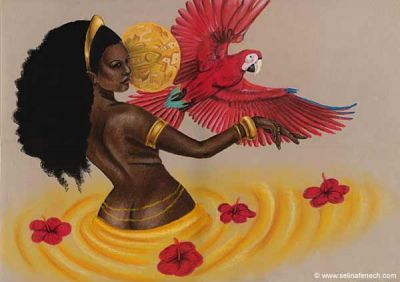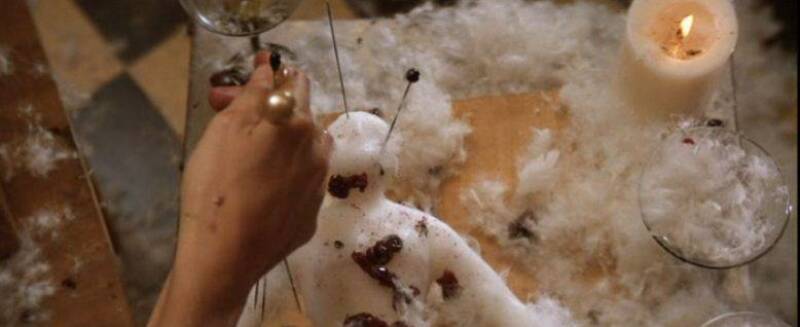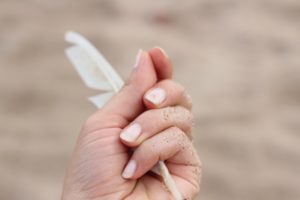Blog, Voodoo Dolls
The Magical Power of Feathers
From ancient times to modern day, feathers have been used as a powerful tool in witchcraft and the practice of folk magic. Whether used for protection, hexing, voodoo or just comfort and guidance, feathers offer something special to those who choose to incorporate them into their craft. With their unique symbolism and energy, these small wings are sure to bring about great power wherever they go!
In the practice of folk magic, feathers are often seen as signifiers of transformation, healing and protection. They can represent communication with the gods, a connection to our ancestors or simply a way to bring good luck. Whatever their purpose may be, feathers carry with them an ancient spiritual wisdom that is timeless and powerful.
In addition, feathers are often used as a way to connect with spirits. They may be hung from a doorway or window as an offering in order to attract benevolent energies into the home. In some cultures, feather charms are also believed to be able to ward off bad luck and danger by deflecting negative energies.
Feathers are also seen as a powerful tool for divination, their beauty and delicacy making them especially suitable for this purpose. By casting the feathers onto the ground or into the wind, many practitioners believe that they can gain insight into what lies beyond our physical realm. In some cases, the arrangement of feathers after being cast is believed to reveal messages from the gods or spiritual entities.
The application of feathers in folk magic can take many forms, depending on the individual practitioner and their own beliefs. They may be used as part of a ritual or spell, worn as an amulet around the neck or simply used to decorate one’s home in order to attract positive energies. Some practitioners believe that certain feathers possess special powers – such as the “eye-feather” of an eagle, which is thought to bring luck and protection.

Many people will see feathers decorating altar tables. For example, to decorate your altar for Yoruba deity or orisha,, you would want to consider the items she most loves to sit on the altar, and these would include; item colors from yellow to orange, in certain types of flowers, in honey and cinnamon. Most importantly, Her objects include peacock feathers and mirrors.
Feathers also represented various elements and principles in folkmagic. For example, black feathers could represent death or protection while white feathers could symbolize purity or peace. Different types of feathers were also used to bring luck, protection, and healing into the lives of those who consulted with them.
The use of feathers is rooted in ancient beliefs that these items could help to connect the physical world with the spirit world. They were believed to bring spiritual forces and energies into the material realm. By using feathers, witches were able to tap into their power and better control their spells and hexes.
Though there are many ways that feathers can be used in witchcraft, one of the most popular is creating voodoo dolls. This practice involves taking a piece of cloth or clothing and stuffing it with feathers, herbs, and other items that are associated with the desired results. By doing this, witches can channel their energy into the doll and project it out into the world in order to achieve a particular outcome.

In addition to voodoo dolls, feathers are also often used in hexing spells. Hexes involve using symbols or words to bind an individual’s power or influence them in some way. By using feathers as a part of a hex, witches are able to focus their energy more clearly on the intended person or situation.
Feathers can also provide comfort and guidance to those who use them. By setting an intention, asking a question or simply meditating with feathers in hand, witches can open themselves up to the energies of the universe and gain insight into their own path. Whether used for hexing, protection spells or just as personal talismans, these small wings are sure to bring great power wherever they go.

Different feathers for different purposes
THE PEACOCK FEATHERS
Peacock feathers were ominous because their pattern resembles an eye. This eye represented the evil eye that people were afraid of. Today the beauty and natural strength of the peacock feathers are recognized again. They are particularly valued precisely for their colorful eyes.
Peacock feather fans are also appropriate for use with other spirits, such as the Hindu Lakshmi and the Roman Juno.
THE FEATHERS OF THE PIE
In the Lokota culture, the black and white feathers of a Pie symbolize a young Indian girl with jet-black hair dressed in a white tunic.
Being a scavenger, this bird helps clean the environment and, by the same token, its feathers are known to cleanse and purify the sick. The pie feathers are used in healing rituals too.
THE FEATHERS OF SPARROW
They are used for the construction and manufacture of good luck amulets.
THE FEATHERS OF AQUATIC BIRDS
They are powerful ritual tools. They carry our prayers and our thoughts to the Great Spirit through streams.
THE EAGLE FEATHERS
In Amerindian magical and spiritual practices, they are used to represent the sacred essence of birds. They are useful in healing rituals as they disperse harmful energies and attract beneficial energies into the body of the sick. The eagles’ feathers are a symbol of peace and they send our prayers to the great spirits.
Fans crafted from various types of feathers or an intact bird’s wing complete with feathers are used in Native American and Native American-influenced traditions as a device for wafting incense, especially for cleansing purposes. A feather fan is often used to direct the smoke, although you may also use your bare hands.
THE FEATHERS OF NIGHTINGALE
The feathers of these birds are good for communication. They help to discover the depths of our consciousness and can teach sacred wisdom.
THE OWL FEATHERS
They are used in esoteric rituals involving secret knowledge.
THE PARROT FEATHERS
This bird’s feather is used as a symbol of communication between tribes. Among Lakota Sioux, the bright colors; red, green, blue and yellow are used to recreate the rainbow. They are also used as symbols of peace and prosperity.
THE FEATHERS OF THE CROW
The raven is one of the animals that humans have always been afraid of. A raven at the window represents the soul of a deceased. Crows feathers are used to mourn a deceased and get rid of unwanted feelings or situations.
The Lokota Sioux, for example, pray with crow feathers for four days after the death. These feathers are kept in sacred places.
THE FEATHERS OF SWAN
They represent beauty, grace and kindness. The pure white swan feathers are used to purify and attract new energy while the black swan feathers are used to disperse unwanted energies.
HAWK FEATHERS
They serve to clarify the diagnosis of diseases in the body; they are famous among shamans and are used to increase the knowledge of doctors.
THE FEATHERS OF THE BLUE JAY
They bring clarity in dark or troubled situations and also bring light that scatters the clouds of depression and sadness.
BIRD-FLY FEATHERS
These feathers are popular in the Southwestern American tribes. They are used to represent the grace of movement and speed of action. They bring beauty and joy and are said to have the ability to illuminate even the darkest places.
THE FALCON FEATHERS
Falcon feathers not only keep the active energy of these agile hunters, but can also be used by people who are experienced in identifying diseases.
THE FEATHERS OF SCISSORTAIL
They are used to honor the mothers of all Native American nations. The feathers of this bird are also used to indicate the sun and the four cardinal points during ceremonies.
History: The Significance of the Feathers Headdress
The history of the ceremonial feathers headdress worn by Native American Indians can be dated towards the end of the 19th century. The feathers of Native American Indians are an essential symbol of their way of life. The feather was given as a sign of respect, strength and honor. Native Americans who possessed certain personal skills or who achieved something of great significance to the tribe were rewarded with head feathers from the bosses or the elders.
Looking at the headdress, it was possible to know how many acts of bravery the warrior had committed. The Native American who wore the headdress with the greatest number of feathers was usually the chief. The more feathers he possessed, the more he was admired by his tribe. You should note that only those who had proved their courage had the right to put an eagle feather in the hair, and this is done until a complete cap is formed. A warrior could become the chief of the tribe only if he had a large number of feathers.
In some communities, feathers are presented to children on the completion of their rites of passage into adulthood. Warbonnets are especially reserved for the figures of power. The most common headdress was between 28 -32 feathers of golden eagle mounted in a radius around a bonnet (the tail of a golden eagle has only 13 feathers). The oldest Blackfoot and Cheyenne headdresses were formerly tube-shaped. Each part of the feather headdress had a meaning that could be understood by all members of the tribe.
The shape of the hat with its feathers radiating around the head of the warrior was the symbol of the divine grace of God that radiated like the sun. The feathers of these headdresses all came from male royal eagles, because this bird represented a very strong symbol. Indeed, in the animist religion of the Indians, each animal possess a certain number of qualities which it transmits to the warrior when this one had found his “protective spirit” (totem), that is to say the animal who would guide him during the hunt, help him during the war and bring him health.
Of all the animals created by “the Great Spirit” (the creative entity), the eagle was the closest to him, since he was flying the highest. His feathers thus had a very special status because they represented not only the sacred essence of birds in general, but could also guide thoughts and prayers to the Great Spirit.
They were also important in healing rituals, being used to disperse harmful energies and attract beneficial energies into the patient’s body. But besides the eagle, every other bird found on American territory had its own qualities and symbols, and the feathers of the owl, blue jay, crow, magpie or hawk could be used either for their medicinal virtues, or for rituals of shamans (esoteric rites, fertility, purification), or for funeral ceremonies and weddings.
The ceremonial feathers symbolized the intermediary between life on earth and celestial beings because, during the smoking of the ceremonial pipes, the sacred smoke rose to the sky. The Indians lived in total harmony with nature and deeply venerated everything that it produced. They said in particular:
“You have to see things with the eyes of the heart and not with the eyes of the head”.
An ancient Indian proverb also says, “He who wears a feather does not lie. “ The feather was therefore central to their culture.
In conclusion, feathers have a long and storied history when it comes to folk magic and witchcraft. They can be used for myriad purposes – from healing and protection to divination and communication with spirits. Whether worn as an amulet or used in ritual, feathers remain a powerful symbol of our connection to the divine and nature’s mysteries.
So we hope this has inspired you to include a feather in your own magical way. Consider the connection a feather has to your own tradition and include it in some way.
I always sew a feather on the chicken feet I create for magical protection. Sometimes I place a feather in each product order I send out. As I place the feather in the box, I think about sending good luck to the client, and wishing that the package arrives to the client safely!
I hope this has given you some ideas as well.

